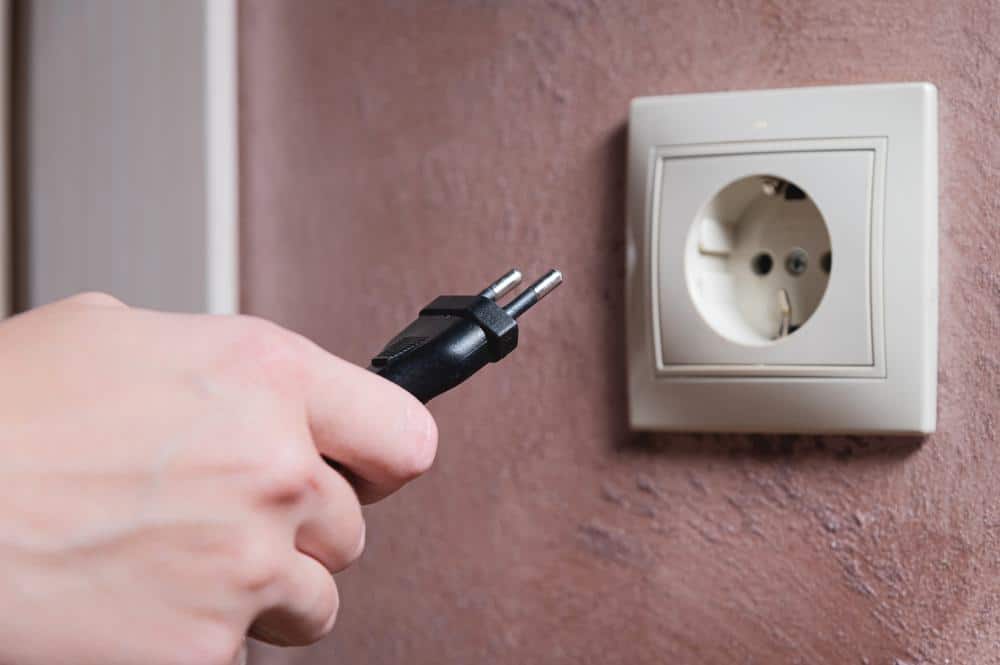
Adding an electrical outlet from an existing one is a common home improvement task that can provide additional convenience and functionality. Whether you want to add an outlet in a room that doesn’t have one or need more outlets to accommodate your growing number of electrical appliances, this guide will provide you with a step-by-step process on how to safely and effectively add an electrical outlet from an existing one.
Adding an electrical outlet from an existing one involves turning off the power, removing the existing outlet, preparing and feeding the new cable through the wall, cutting an opening for the new outlet and fishing the cable to the new location. Then, rewire the existing outlet, wire the new outlet, and install it. Test the new outlet to ensure it’s functioning correctly. Always ensure to take safety precautions and use the correct tools. If you are unsure, hire a professional electrician.
Safety Precautions
Before we dive into the process, it’s essential to understand the safety precautions you need to take when dealing with electricity. These precautions will help prevent electrical fires, shocks, and other hazards:
- Turn off the power: Locate your home’s main service panel and turn off the power to the circuit you will be working on.
- Test the outlet: Use a voltage tester to ensure that the power is off before starting any work.
- Use proper tools and protective gear: Always wear safety glasses and gloves while working on electrical outlets to protect your eyes and hands from electric shock.
Tools and Materials Needed
To add an electrical outlet from an existing one, you will need the following tools and materials:
- Hammer
- Tape measure
- Laser level
- Flathead screwdriver
- Phillips screwdriver
- Voltmeter
- Fish tape
- Flashlight
- Wire cutters
- Linesman pliers
Step-by-Step Guide
Now that we’ve covered the safety precautions and the tools you’ll need, let’s discuss the actual process of adding an electrical outlet from an existing one.
Step 1: Turn off the Power
Always start by turning off the power at the circuit panel. Test the existing outlet with a voltage tester to confirm that the power is indeed off.
Step 2: Remove the Existing Outlet
Unscrew the existing outlet cover plate and carefully pull the outlet away from the wall. Let it hang to one side.
Step 3: Prepare the New Cable
Punch out one of the knock-outs at the back of the existing outlet box with a screwdriver. Feed the new electrical cable through the opening, sending enough wire through the wall to reach the new outlet plus an extra foot of wire.
Step 4: Cut the Opening for the New Outlet
Mark the opening for the new box on the drywall and cut it out with a drywall saw. Be cautious not to cut any wires behind the wall.
Step 5: Fish the Cable to the New Location
Fish for the new cable with a hook made from a wire coat hanger. Pull the cable through the opening cut in the wall. Strip about nine inches of sheathing off the end of the cable and insert it into the new electrical box.
Step 6: Rewire the Existing Outlet
Take a photo of the existing outlet’s wire connections to remember how they connect. The box should have three wires: a black (hot) wire, a white (neutral) wire, and a bare copper or green wire (ground). Connect the wires of the new cable to the existing wires.
Step 7: Wire the New Outlet
Splice the wires from the new cable onto the old wires along with pigtails that will connect to the new outlet. Attach the ground wire to the ground screw (green), the white neutral wire to a silver screw, and the black wire to a gold screw.
Step 8: Install the New Outlet
Screw the receptacle into the new electrical box and install the cover plate.
Testing the New Outlet
Once the wiring is complete, turn the power back on at the main panel and test the new outlet to ensure it’s functioning correctly.
Common Mistakes to Avoid
Even with careful preparation and attention to detail, mistakes can happen. Here are some common mistakes to avoid:
- Not testing for power before and after turning off the breaker.
- Using backstab connections instead of screw terminals.
- Connecting the wrong wire to the wrong terminal.
- Leaving loose outlets or switches.
- Reversing wires.
By following these steps and avoiding common mistakes, you can safely and effectively add an electrical outlet from an existing one. Remember, if you feel at any point that the task is beyond your skills, it’s best to hire a professional electrician. Safety should always be your primary concern when working with electrical systems.
Frequently Asked Questions
Can I use any type of cable for this task?
No, It’s important to use a cable that matches the gauge and type of the existing wiring. Typically, for residential outlets, a 14-gauge or 12-gauge wire is used.
What should I do if the breaker keeps tripping after I’ve added the new outlet?
If the breaker trips after installing the new outlet, there’s likely a short circuit. This could be due to incorrect wiring or a faulty outlet. You should turn off the power, double-check your work, and if the problem persists, consult with a professional electrician.
How can I tell which wire is hot and which is neutral?
In a standard cable, the hot wire is black, and the neutral wire is white. The ground wire is typically bare copper or green.
Is it necessary to use a voltage tester?
Yes, a voltage tester is crucial for safety. It confirms that the power is off before you start working and helps avoid the risk of electrical shock.
Do I need a permit to add an electrical outlet?
Depending on your local building codes, you may need a permit to add an electrical outlet. Check with your local building department or a professional electrician to be sure.












